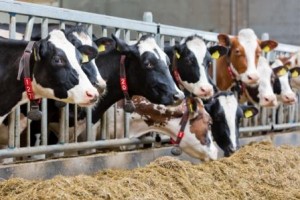 The Ukrainian milk producers and processors expressed many complaints about the dairy situation. Like the whole country, they are now going through hard times. Geopolitical crisis fueled by Russia and general economic problems have a negative impact on the dairy business, resulting in low milk prices.
The Ukrainian milk producers and processors expressed many complaints about the dairy situation. Like the whole country, they are now going through hard times. Geopolitical crisis fueled by Russia and general economic problems have a negative impact on the dairy business, resulting in low milk prices.
Same factors
Apart from the conflict and Russian ban on food imports, the development of the dairy sector in Ukraine is constrained by the same factors as a few years ago: expensive loans, uncertainty with the land market, constantly changing of rules of the game and as consequence, dependence on bureaucracy. Still, the fundamentals look good: dairy business in Ukraine is profitable and promising.
Of course, the dairy industry will need a long time to return to the volume of output of 25 years ago when Ukraine produced 24 million ton of milk, and 18 million tons were processed by 460 factories. The biggest challenge the Ukrainian sector is facing right now, is the availability of good quality raw milk. There is a huge shortage. Last year Ukraine processed 5,31 million ton of milk. Half of this amount was sourced by 1,9 million cows placed in the backyard farms and Babushkas holding 1 or 2 milk cows. This does not look like a sustainable business model.
Domestic market
It is unavoidable that the demands from Ukrainian retail and new EU-based regulations will rapidly change the picture on the domestic market. Right now in Ukraine approximately 3.500 professional farms keep 565.000 cows and produce 2,84 million tons of good quality milk solely for the processing industry. It easy to predict, that their share will rapidly grow in the upcoming years. In the first 9 months of 2014, milk production at the professional farms has already increased by 8,5%, and this tendency will further continue. On invitation of the Dutch Embassy, Kevin Bellamy of Rabobank International, shared his vision on the global dairy market. He believes, that global demand will rise by another 25 million tons in 2020. Ukraine has all the possibilities to play an important role at the world market and produce a share of this amount. But if Ukraine aims at joining the league of biggest dairy exporters in the world, the urgent issue of high quality milk supply needs to be resolved.
UA fundamentals
The fundamentals of the Ukrainian dairy sector remain good, based on cheap land and labor. Dairy production can be extremely profitable for those farmers, who manage to control their production process. Today the Ukrainian price for the high quality milk is rather low. Among the reasons are the global decline of milk prices, the Russian ban, and the drop of local consumer purchasing power. However, the dairy farms can still register margin of 15 % which is all in all amazing profitable. If milk prices even return to the situation of last year, 50% EBITA profit would be realistic. As soon as the Ukrainian government implements the reform of the land market either by setting the transparent land lease rules or by ending the moratorium on the sale of land, one of the biggest institutional bottlenecks for further dairy growth will disappear. Another challenge to tackle is insufficient level of practical training, knowledge and management. An average milk production per cow 4.800 kg/cow provides quite some room for improvement.
Milk improvement
Ukraine does not have other choice, then to strive for milk improvement. Western Europe is rapidly increasing its dairy production because of the end of the milk quota. With the lower milk demand from China and the Russian boycott of European food products, the European producers are looking for the new export markets. This have already resulted in more competition on the Ukrainian domestic market.
Last year Ukraine imported 548.000 tons of high quality milk (16% market share). This year due the crisis Ukraine will only import 248.00 tons of raw milk and 140.000 tons of processed dairy products. TerraFood president Mr. Chagarovsky rightfully pointed out that the Ukrainian market shortly will be protected by the low value of local currency, but this period should be used effectively.
The business model of the Ukrainian dairy sector, based on producing low quality, cheap cheese for the domestic and Russian market, is under high pressure. New and existing local and foreign investors need to step into the dairy market. And considering the profitability they will do so as soon as the issue of land market is clear, and the country risk is lowered.
Thanks to Evert Jan Kraaijenbrink, Agricultural Counsellor, Dutch Embassy in Kiev.

